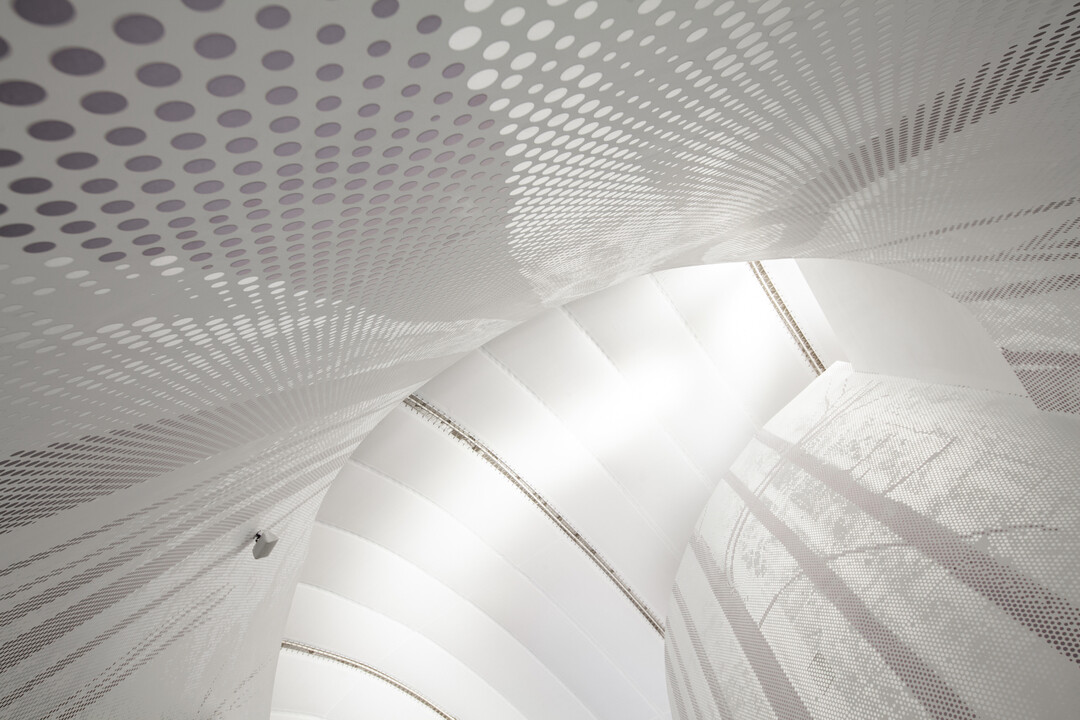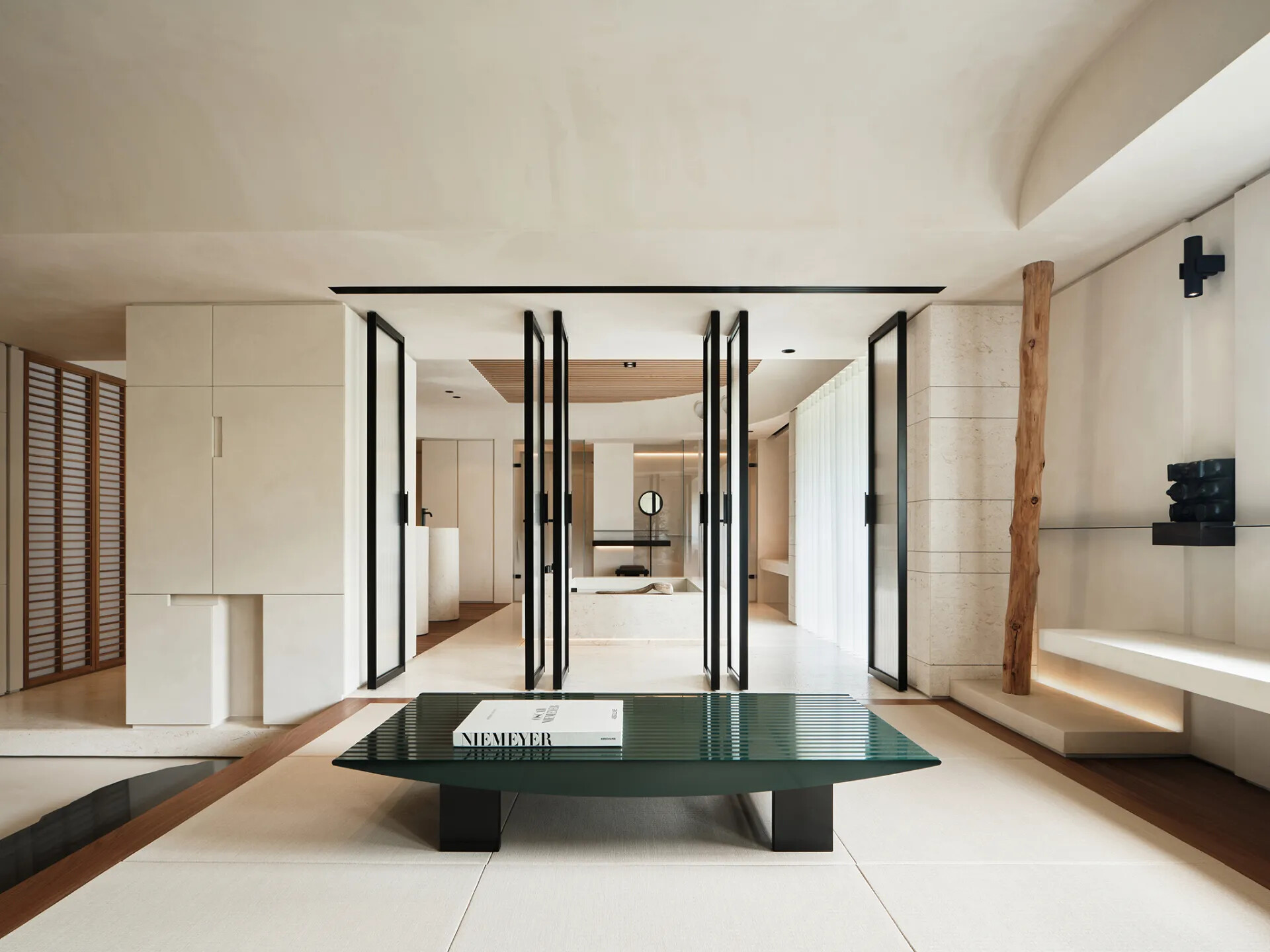
Members Only
Please join as a member and click "Members Only" to read more complete articles and exclusive content.

Please join as a member and click "Members Only" to read more complete articles and exclusive content.

從古至今,人們不斷地在追尋及探討「理想世界」的樣貌為何,在文人世界的詩詞吟唱裡,藝術美學的繪畫中,建築及園林的構成,都能看見人類對於這個虛擬世界的解讀。陶淵明的桃花源,文徵明筆下的山水,文震亨的長物志皆提出了理想生活方式的可能,外尋而內觀,望及達到林泉之志極致的生活態度。
「會心處不必在遠,翳然林水,便自有濠、濮間想也。」使人怡然自得的地方不必遠,綠樹掩映蔥鬱,自然感覺逍遙脫俗,獲得性靈自由。「水光日景」在城市中創造了一處詩意的栖居,步入門居,開門見山便是座小庭園,小石子圍繞綠意植栽,樹因屋而居,屋因樹得生機。在此唐忠漢刻意將感官覺知停留於頂天玻璃窗產生的開闊視野,留下一絲探尋念頭。庭園之入口與茶室的木踏階鑲嵌在一起,必須繞其而行才得以親近自然。曲牆引導至規矩的方正平面,以過道和遊牆分隔成若干場域,茶室銜接庭園及浴池,四面開放又封閉。開,是其與相鄰機能以全開門形式製成模糊界線串連成一體,而與外界百年松樹利用窗洞框景相映成趣。閉,則是在拉門闔上後自成一隅閒情雅致品茶聞香之處。窗上不對稱垂直水平分割與石階交錯層疊,轉化傳統茶室象徵精神元素的中柱合而為一,坐臥疊蓆,樹影斑駁,侘寂精神油然而生。
「水光日景」在唐忠漢的設計下,將日常生活與哲學精神濃縮融為一體,牆、窗、門扇在幽暗明亮的光線變化疊加下構成了「進」的開闔封閉通阻,踏階高程起伏升堂入室,從一境界進入另一境界,榻上飲茶,氤氳洗沐,山水疊石,成為理想世界庇護所。